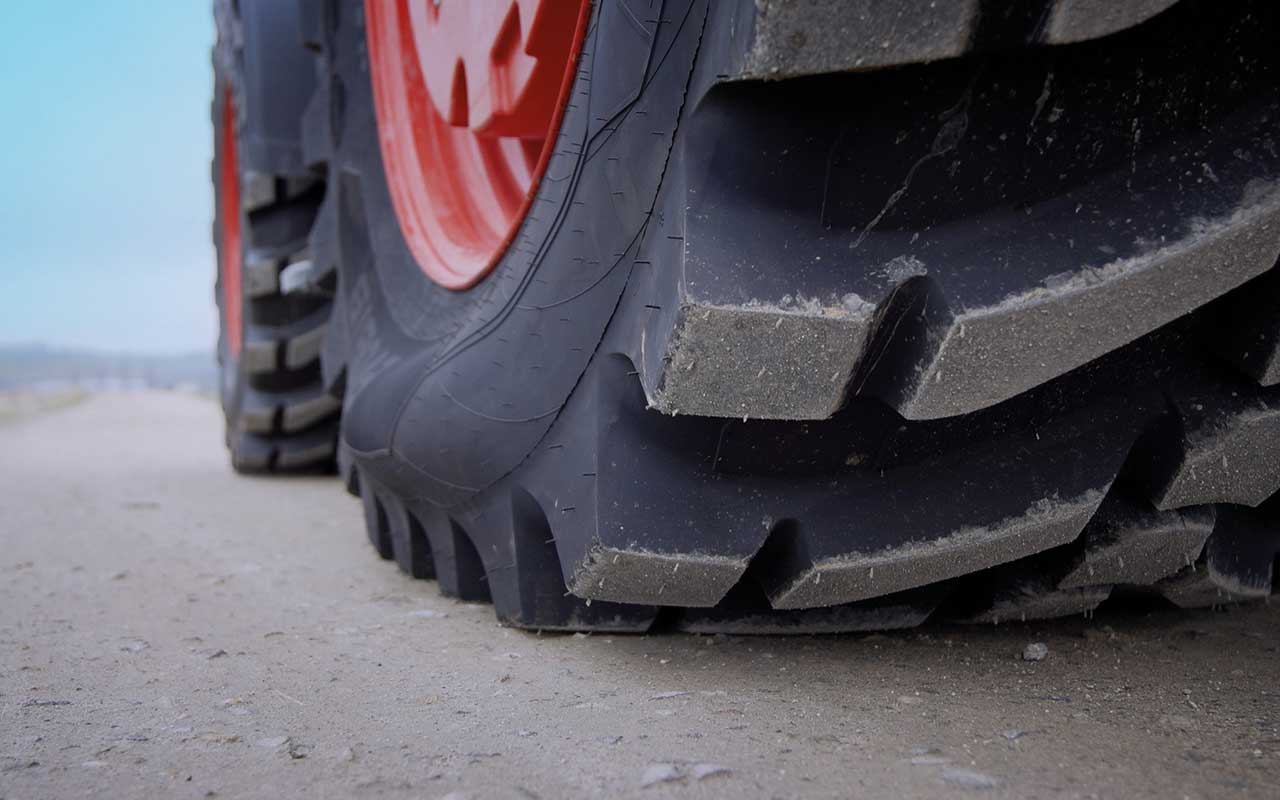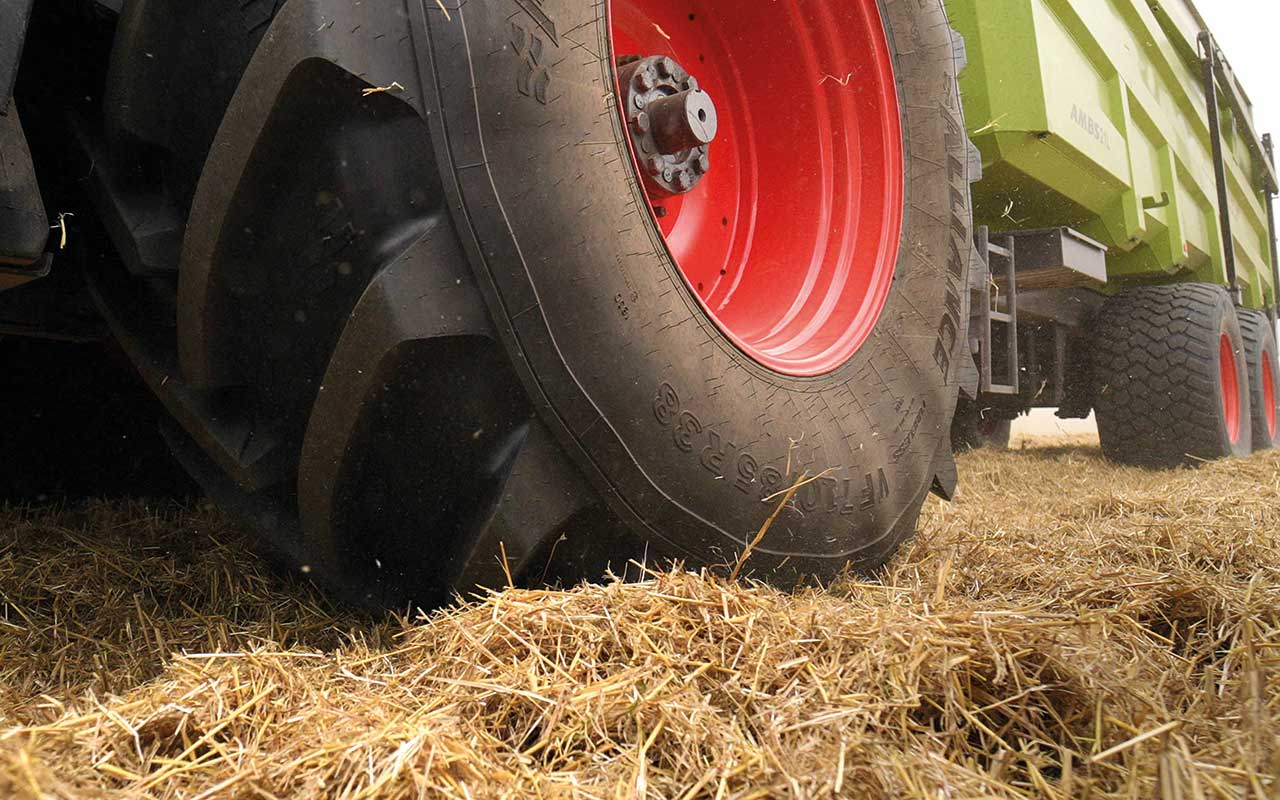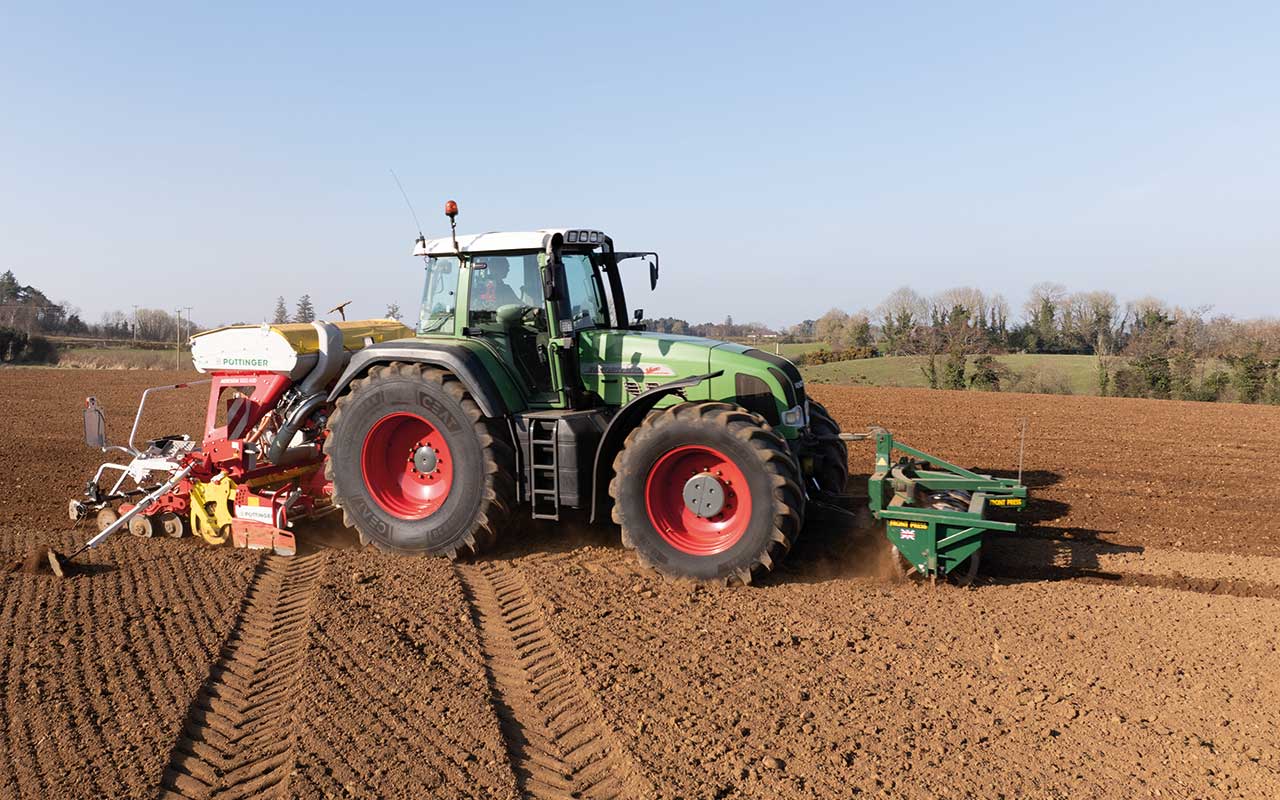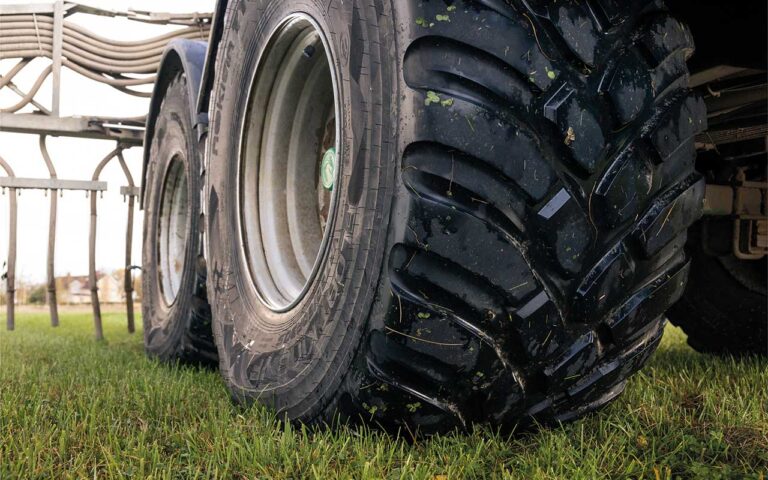At this point, there is little need to reiterate the potential benefits of increased flexion (IF) and very high-flexion (VF) tyres.
The increased load capacities at standard pressures can be used during transport, while the lower pressures available in the field can limit soil compaction, reduce slip and maximise traction.
The technology has become so commonplace that new entrants to the UK market are skipping the IF stage completely in a bid to compete within the VF market. In the case of specialist manufacturers like Nokian Heavy Tyres, distributed in the UK through Nordic Tyres, part of GB Tyres, for their first standard tread agricultural tyre they have jumped straight to the VF standard with the Soil King and Float King ranges.
“As a premium brand, looking to increase our product portfolio for high-end users, it made sense to offer a premium product straightaway and then consider the market before producing a non-VF variant,” explains Colm Cunningham, sales manager UK and Ireland.
Nokian’s VF technology is built around its FlexForce carcass, which is wrapped around a steel belt to ensure that the tyre holds its shape when flexing, as well as protecting against punctures.
Colm adds that the design features square shoulders for an ‘XXL’ profile that spreads the footprint further to maximum ground contact. On the road, he notes that users can be more assured operating at high speeds, with quiet running during an extended working life.
“When you look at the dimensions of a tyre, a lot are overstated to represent the maximum width,” he says. “Nokian tyres actually exceed the stated dimensions during work, so the customer is sure they are getting the correct performance.”
Pierre Choubert, business manager at Nokian, adds that VF will likely remain the standard for agricultural tyres for the foreseeable future. The changes will come from associated technologies that enable growers to maximise their use.
“It won’t be about reducing pressures further,” he says. “Instead, this technology will help to protect the tyre and minimise fuel consumption during operations. The greater availability of central tyre inflation systems [CTIS] makes it easier to adjust pressures, and for growers to see these benefits.”
He also points to the company’s built-in tyre sensor, the Intuitu, which links to a mobile phone or tablet and shows the operator the tyre pressure, temperature and tread wear.
“We use a high percentage of natural rubber in our tyres, which aids with heat dissipation, but the best way to benefit from VF technology and justify the increased cost of investment is to use monitoring systems such as this.”

Moving down the range
According to Tom Saunders, agricultural technical manager for Michelin, the developments in VF technology means that IF technology is being integrated into Michelin’s Kleber mid-priced range, enabling cost-conscious growers to still benefit from operating at reduced pressures.
He adds that one of the key benefits of the Michelin EvoBib VF range is the hinge point built into the shoulders.
“As the pressure is reduced, the full width of the lug is placed on the soil surface to increase traction. However, at higher roading pressures, the shoulders become rounded again and are lifted out of contact with the road so that tyre can run on the central part of the tread for improved comfort and fuel economy.”
Michelin also recognises the close relationship between CTIS adoption and increased interest in VF technology. The Michelin Group acquired German manufacturer PTG in 2017, which distributes products in the UK through TractAir.
“With integrated systems, people can get similar performance to tracks at a smaller capital cost,” Tom says. “Being able to adjust pressures from the cab also improves efficiency and goes some way to ensuring that pressures are changed at the right time.”

Aligning technology
According to Gerrit Vinkers, field service manager for Europe at Yokohama-ATG (Y-ATG), the fact that CTIS systems are becoming more commonplace is directly increasing demand for VF tyres.
“Using the Alliance Agriflex+ tyre in combination with a CTIS allows farmers to fully exploit the tire’s capabilities. It enables quick and efficient adjustment of inflation pressure when transitioning between road, field and headlands – maximising performance, comfort and soil protection.”
He recognises that the additional cost of VF, especially when looking at replacing a set of tyres aftermarket, may be a concern to customers, but believes that when used properly, there is an easy business case for this.
“Proper tyre pressure reduces slippage, which translates to fewer working hours needed to cover the same area, or more area covered in the same time. This means lower fuel consumption and reduced hourly operating costs.
“Independent tests have shown a yield increase, resulting in approximately €30/ha extra. These are direct, measurable benefits. Additionally, lower soil compaction means less deep-soil damage (40–100cm), which is expensive and time-consuming to correct.”
Of course, while VF tyres follow an industry standard to provide the 40% increased load capacity at normal pressures and the ability to carry the same load as a standard tyre at a 40% reduced pressure, each manufacturer has its own development. This brings in features that are unique to each brand.
According to BKT, its VF range uses smaller-diameter reinforcement fabrics than in a standard tyre.
This increases the number of plies within the same thickness of tyre for greater durability. Another key feature is its reinforced beading, which grips the rim of the wheel even as the tyre flexes.
One of the key challenges for both manufacturers and the customer is the choice between tracks and VF tyres, both of which are marketed to spread the weight of equipment, improve traction and reduce soil damage.
For BKT, tracks have their place, especially on soft ground or when handling large loads with small amounts of road time – on harvesting equipment, for example.
VF tyres, however, offer greater versatility as these can be reinflated for road operations. “They offer superior ride comfort, speed and safety when compared to a track system,” a spokesperson from the field engineering team explains.
A change in mindset
While IF and VF are often discussed as new technologies, the basis for these have been there since the late 1990s. However, it has taken time for customers to adopt these tyres. According to Scott Sloane, global agricultural/LSW product manager for Goodyear Farm Tires, adjusting pressures requires a change in mindset.
“Customers would be amazed at just how much air they could take out of a standard tyre,” he says. “However, there’s a visual aspect to this. They see the sidewall buckling and believe the tyre is flat and is causing damage.”
The Goodyear Low Sidewall (LSW) design eliminates this visual deterrent. By reducing the size of the sidewalls, this buckling is no longer present. However, it also has the additional benefit, according to Scott, of reducing road lope and power hopping.
“There’s a balance with VF tyres, especially when you don’t have a CTIS system. Users often try to find a pressure where they can run safely on the road between fields, while also reducing compaction during work. The LSW design improves the handling characteristics on the road.”
He adds that customers will see greater value from all their tyres if they pay attention to the loading, and Goodyear runs thousands of on-farm workshops to help growers and contractors understand this.
“The benefits of reducing pressures are well known, and we know that there will be a notable improvement in yield data when using LSWs.
“However, there are too many variables involved year to year to state specific yield increases. Once they start using the technology, traction, stability and handling all increase, which helps to reduce the overall cost of ownership.”
Alongside future developments, Scott believes there is a need for larger-diameter tyres, which will work with VF technology to create a longer, wider footprint.
“OEMs are now starting to realise the benefits of larger tyres, but we’re always looking to develop that market.”

The future of tyres
Integrated technology will continue to be the focus of tyre manufacturers, aiding customers with taking full advantage of the benefits of low-inflation tyres.
According to Ceat Specialty, embedded sensor technology will play a key role in this. As with other manufacturers, these systems will monitor tyre health (including pressure and temperature information), as well as soil conditions to inform the operator of any required changes.
This technology will be vital when it comes to automating tyre pressure adjustments. Rather than informing the driver that a change is required, the combination of integrated sensors and CTIS will enable machines to adjust tyre pressures as required.
The design process is also changing, with 3D printing enabling new tread patterns to be developed and tested. According to Ceat, this could lead to tyres that are specifically manufactured to work on certain soil types, or in different conditions to optimise tyre life.
Perhaps further into the future, the focus will shift to materials, with new polymers introduced that will repair minor cuts and punctures, reducing the maintenance costs of tyres, while new compounds will increase the tyre life and less damaging to the environment.
High-horsepower market
Or perhaps something a little different could come into the high-horsepower market. Speaking to Trelleborg, now Yokohama-TWS, the company highlights its PneuTrac tyre system.
Currently available for specialist tractors for hillside work in vineyards, it combines the design of a standard radial tyre, with a unique sidewall design that allows the tyre to flex and create a track-like tread.
“We see great potential to expand this technology to other applications and larger machines, particularly given the rising demand for high-performance tyres on bigger agricultural equipment.
“We are already exploring how to extend the application of PneuTrac while maintaining high performance across different machine types and meeting the evolving needs of modern farming,” a spokesperson explains.
As for the next batch of VF tyres, Trelleborg has been integrating Cyclic Field Operations (CFO) and Pressure Field Operations (PFO) technology into its range of tyres.
The former enables machines like harvesters to handle increased loads for short periods of time, to accommodate for the filling and emptying of the tank.
PFO has a similar effect for tractors, increasing the load capacity of the tyres at working speeds of 10-20kph.
“Our R&D efforts are now focused on increasing durability, flexibility and efficiency under demanding field conditions. We aim to develop tyres that are stronger and smarter, fully aligned with the needs of sustainable, precision-based agriculture.”



